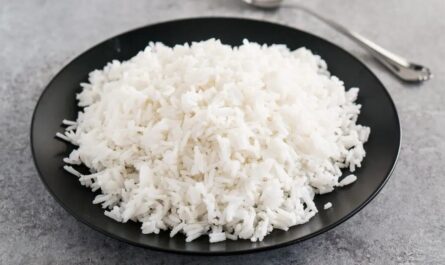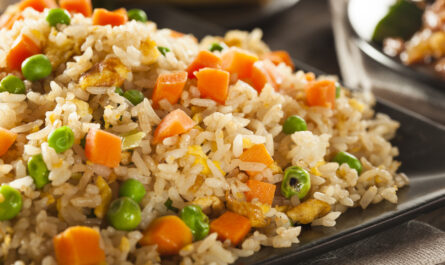There’s a certain culinary magic in knowing how to cook dry beans in a pressure cooker, a method that transforms humble beans into a delightful, protein-packed ingredient for your favorite meals. In this comprehensive guide, we will unravel the secrets of bean perfection using the pressure cooker, a tool that has become a kitchen essential. Imagine a world where hearty bean soups, stews, and salads are within your reach, all thanks to the mighty pressure cooker.

Why Choose a Pressure Cooker?
Pressure cooking is a game-changer for busy food enthusiasts who crave the wholesome goodness of home-cooked meals. The pressure cooker uses steam to increase the atmospheric pressure, which raises the water boiling point, allowing food to cook faster and more efficiently. This method is known for retaining nutrients, enhancing flavors, and tenderizing ingredientsmaking it ideal for dry beans, which often require lengthy soaking and simmering times.
The Benefits of Pressure Cooking Beans
When you learn how to cook dry beans in a pressure cooker, you unlock numerous benefits. First and foremost is the time-saving aspect; what traditionally takes hours can be achieved in a fraction of the timeperfect for those weeknight dinner crunches. Additionally, pressure cooking requires minimal effort, as you can set it and forget it, allowing you to focus on other tasks or simply unwind as your meal cooks itself. Plus, the flavor infusion that occurs under pressure results in beans that are aromatic and full-bodied, a feature that conventional pot cooking often struggles to deliver.
Choosing Your Beans
The wonderful world of beans offers a diverse range of choices, from black beans and chickpeas to kidney beans and lentils. Each type of bean has unique characteristics that can elevate various dishes. Before embarking on your pressure cooking journey, it’s essential to select the right kind of beans for your recipe. Black beans are great for salsas and Latin dishes, while chickpeas shine as the base for hummus or in Mediterranean stews. Kidney beans are a classic choice for chilies, and lentils add a hearty texture to soups and curries.
Preparation is Key: Sorting and Rinsing
Before cooking, take the time to sort through your dry beans. Remove any debris, damaged beans, or small stones that may have sneaked in during packaging. Once sorted, rinse the beans thoroughly under cold running water using a fine mesh strainer. This step is crucial to remove dirt and impurities, ensuring that your dish is clean and enjoyable.
The Soaking Debate: To Soak or Not to Soak
One of the most debated topics in the bean-cooking world is whether to soak your beans before cooking. Soaking helps to reduce cooking time and can make beans easier to digest by reducing their oligosaccharide content, which can cause bloating and gas. If you choose to soak, cover the beans with water, let them sit for eight hours or overnight, then drain and rinse before cooking. However, with a pressure cooker, soaking is optional. The high-pressure environment can still deliver tender beans without the pre-soak, albeit with a slightly longer cooking time.
Ingredients and Equipment
| Ingredients |
| 1 cup dry beans of your choice |
| 4 cups water or vegetable broth |
| 1 tablespoon olive oil |
| 1 teaspoon salt (optional) |
| Herbs and spices (bay leaf, thyme, garlic) optional |
Cooking the Beans
Now it’s time to bring it all together. Begin by placing the dry beans in your trusted pressure cooker. Add the water or broth, which should be about three times the volume of the beans to ensure proper cooking; feel free to use broth for a richer taste. Drizzle in the olive oilthis prevents excess foam from forming during cookingand sprinkle in your salt or seasoning of choice. Top it off with herbs or spices if you’re aiming for a particularly flavorful batch.
Cooking Time and Method
Secure the lid on the pressure cooker, ensuring it’s locked correctly following the manufacturer’s instructions. Set the cooker to high pressure. The time needed varies based on the bean type and whether they’re soaked or not. Generally, soaked beans require about 20 minutes under pressure, while unsoaked beans may need 30-40 minutes. Once the pressure cooking is complete, let the cooker naturally release pressure before opening the lid. This gradual release further tenderizes the beans.
Post-Cooking Support
After cooking, your beans should be tender and ready to enhance any dish. If you’d like to store them, allow the beans to cool completely before transferring to an airtight container. Refrigerated beans can last up to five days, while freezing can extend their shelf life to several months, providing convenience for future meals.
Bean Pairings and Recipe Ideas
Whether you’re a fan of salads, soups, stews, or rice dishes, cooked beans stand as a versatile component. Use them in a Mexican black bean salad with lime dressing for freshness, or add them to curries and rice bowls to introduce texture and fiber. Explore various international cuisines, from Middle Eastern falafel to Indian dals, and you’ll quickly appreciate the humble bean’s adaptability.
Pressure Cooking Tips and Tricks
If you’re new to pressure cooking, start with a reliable guide or cookbook tailored for your specific model. Maintain your pressure cooker with regular cleaning and careusing products like cookware cleanerto ensure optimal performance. Lastly, familiarize yourself with your cooker’s pressure release mechanisms and safety features by reading guides, such as those provided by Delish, to make bean cooking an enjoyable and non-intimidating endeavor.

Final Thoughts
Rich in flavor and tradition, learning how to cook dry beans in a pressure cooker enhances your culinary repertoire while providing nourishing meals for family and friends. As more households embrace the practicality of pressure cooking, the simple act of preparing dry beans transforms into an art that marries modern convenience with time-honored cooking methods, enabling you to delve into a diverse world of taste and nutrition.
For further exploration into pressure cooking and bean recipes, visit this guide from Sushi & Rice.
This article contains affiliate links. We may earn a commission at no extra cost to you.




